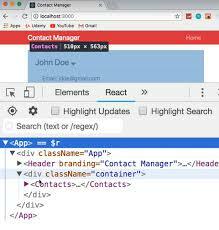Introduction
In the fast-paced world of web development, staying productive is key to creating efficient and high-quality applications. When it comes to building user interfaces, React JS has become a popular choice due to its component-based architecture and reusability. In this blog, we'll explore three valuable hacks that can significantly enhance your productivity when working with React JS.
1. Master the Component Structure
React's component-based architecture is at the heart of its efficiency. To maximize your productivity, it's crucial to understand and harness the power of component structure. Divide your UI into smaller, reusable components that can be developed and tested individually. This not only promotes code reusability but also simplifies debugging and maintenance.
Consider adopting these practices to make the most of React's component structure:
Single Responsibility Principle: Each component should have a clear and specific responsibility. This makes code easier to understand and minimizes unexpected side effects.
Container and Presentational Components: Distinguish between container components (handling logic and data) and presentational components (focused on rendering UI). This separation of concerns enhances code organization.
Reusable Components: Identify parts of your UI that can be reused across different parts of the application. Creating reusable components not only saves time but also ensures consistent design and functionality.
2. Utilize Developer Tools
React JS comes with powerful developer tools that can significantly improve your efficiency and help you pinpoint issues in your application. Familiarize yourself with these tools and integrate them into your workflow:
React DevTools: This browser extension allows you to inspect components, their props, state, and hierarchy. You can also simulate state changes and analyze how they affect the UI. This tool is invaluable for debugging and understanding your application's behavior.
React Profiler: Performance is crucial for user satisfaction. The React Profiler helps you identify performance bottlenecks in your components, allowing you to optimize rendering and improve the overall user experience.
3. Leverage State Management
Managing state effectively is one of the core challenges in React development. Adopting a reliable state management approach can save you time and prevent headaches down the line. Two popular options are:
Context API: This built-in feature provides a way to manage global state without the need for third-party libraries. It's ideal for small to medium-sized applications where the state doesn't need complex management.
Redux: For larger applications with intricate state requirements, Redux offers a centralized and predictable way to manage state. Though it introduces some initial complexity, it pays off in the long run by making your codebase more maintainable.
Conclusion
Becoming proficient in React JS is not just about writing code—it's about writing code efficiently. By mastering the component structure, utilizing developer tools, and adopting a smart state management strategy, you can significantly boost your productivity as a React developer. Remember, the key to productivity lies in continuous learning and refining your techniques, so stay curious and open to new ways of improving your React development workflow.





Top comments (0)